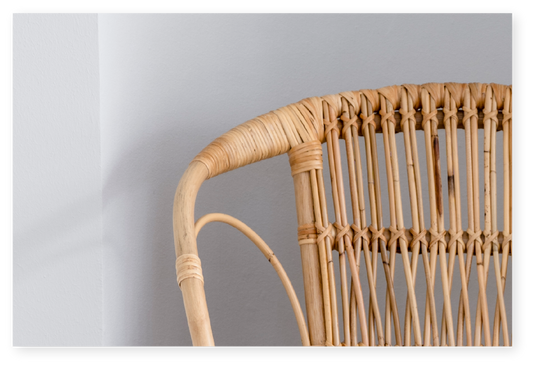Menu title
This section doesn’t currently include any content. Add content to this section using the sidebar.
Menu title
This section doesn’t currently include any content. Add content to this section using the sidebar.
Menu title
This section doesn’t currently include any content. Add content to this section using the sidebar.
The Machiya bench is created by Japanese designer Jin Kuramoto. Machiya is the name of traditional wooden townhouses found throughout Japan which are built side-by-side, making them space efficiently, and with characteristic wooden lattices on the facade. Through beautiful lines and a smart storage shelf these features are implemented in the Machiya bench.
The Machiya bench is handmade by skilled wicker makers of the sustainable material rattan. Rattan is extremely flexible and when it gets steamed it can be formed by hand, using old traditional manufacturing techniques and a few simple tools. Rattan is the most sustainable material for furniture manufacturing as it regenerates in the span of 5-7 years. Rattan comes in 600 different variants, and at Sika-Design we only use the two best qualities called Tohiti and Manau.
The Machiya bench is part of Sika-Design's ICONS collection which represents designer furniture by some of the world’s greatest designer and architects.
Width: 120 cm | 47.3 inches *
Depth: 43 cm | 17 inches *
Height: 44 cm | 17.4 inches *
Seat height: 44 cm | 17.4 inches *
Weight: 6.36 kg | 8.5 lbs *
* Measurements & weight displayed do not include any selected add-on
This furniture is handcrafted in rattan, which is one of the most sustainable materials available for furniture manufacturing. Rattan is often confused with bamboo, but unlike hollow bamboo, rattan is a solid material. This makes rattan furniture very durable, and able to last for generations.
When steamed for 10-15 minutes, rattan can be formed by hand using old traditional manufacturing techniques and a few simple tools. Rattan comes in 600 different variants and at Sika-Design we only use the two best qualities called Tohiti and Manau. Read more about rattan here.
MAINTENANCE Rattan requires no maintenance but can be wiped with a lightly dampened cloth if needed. Find more information about care and maintenance here.

